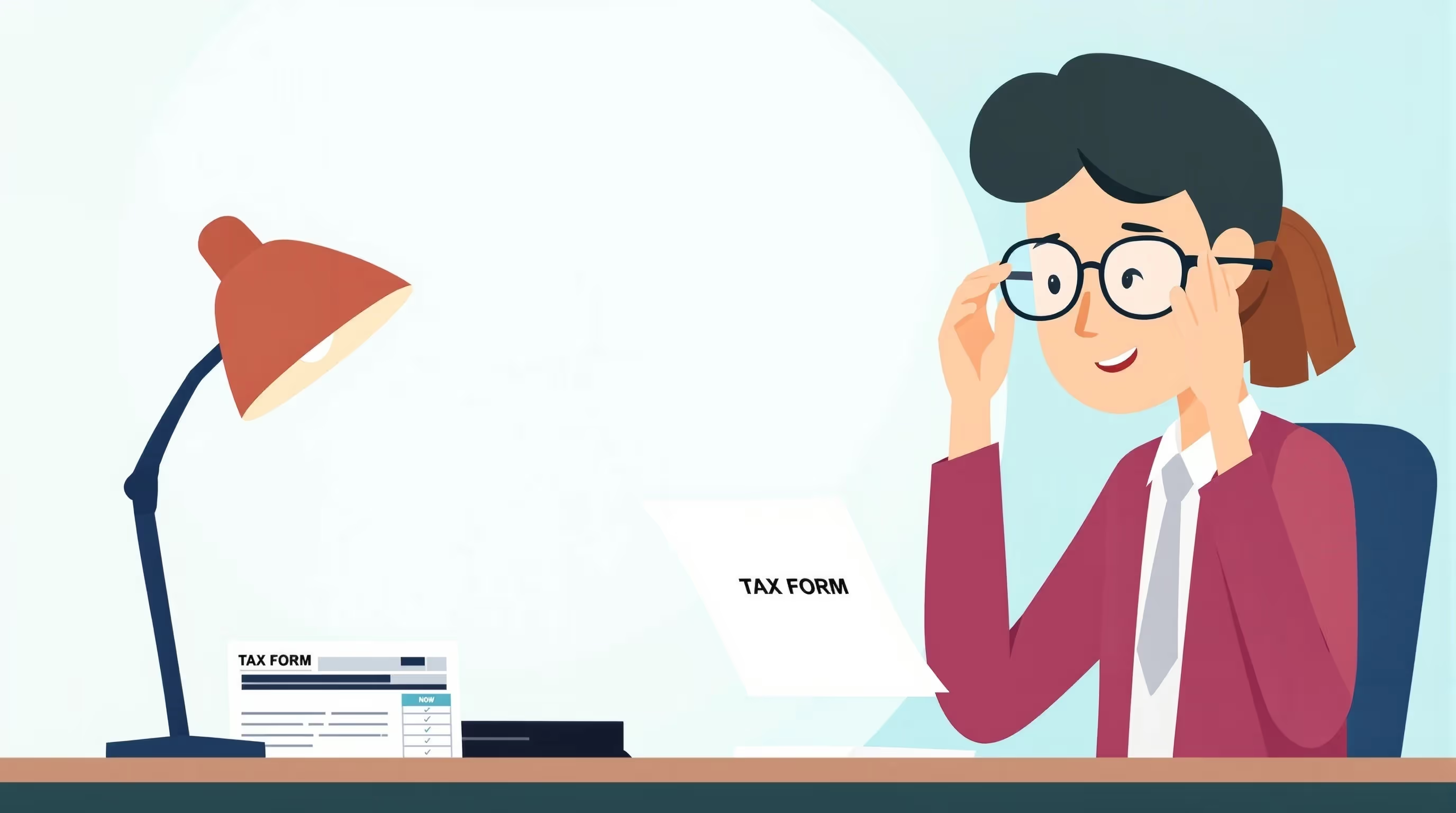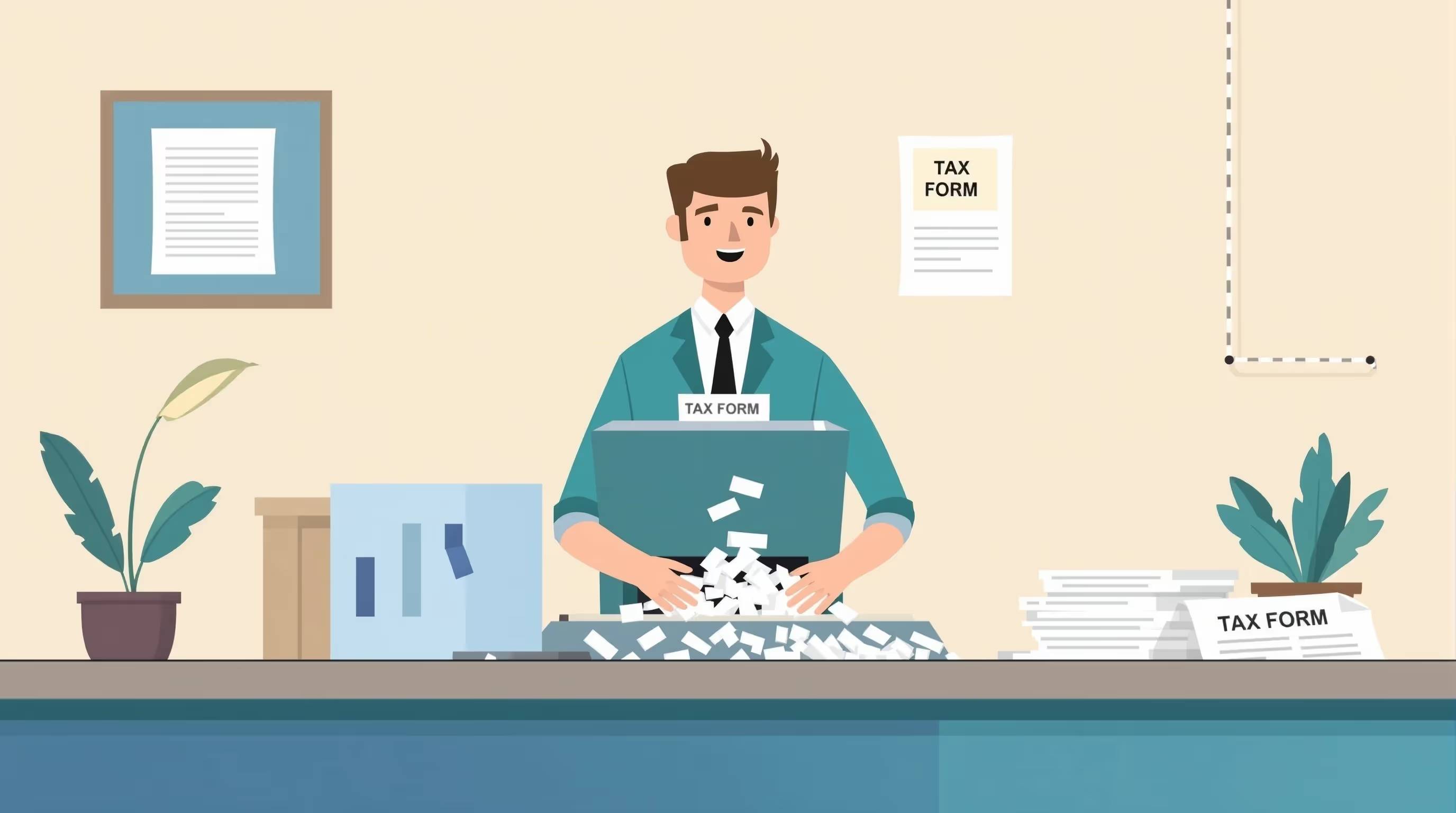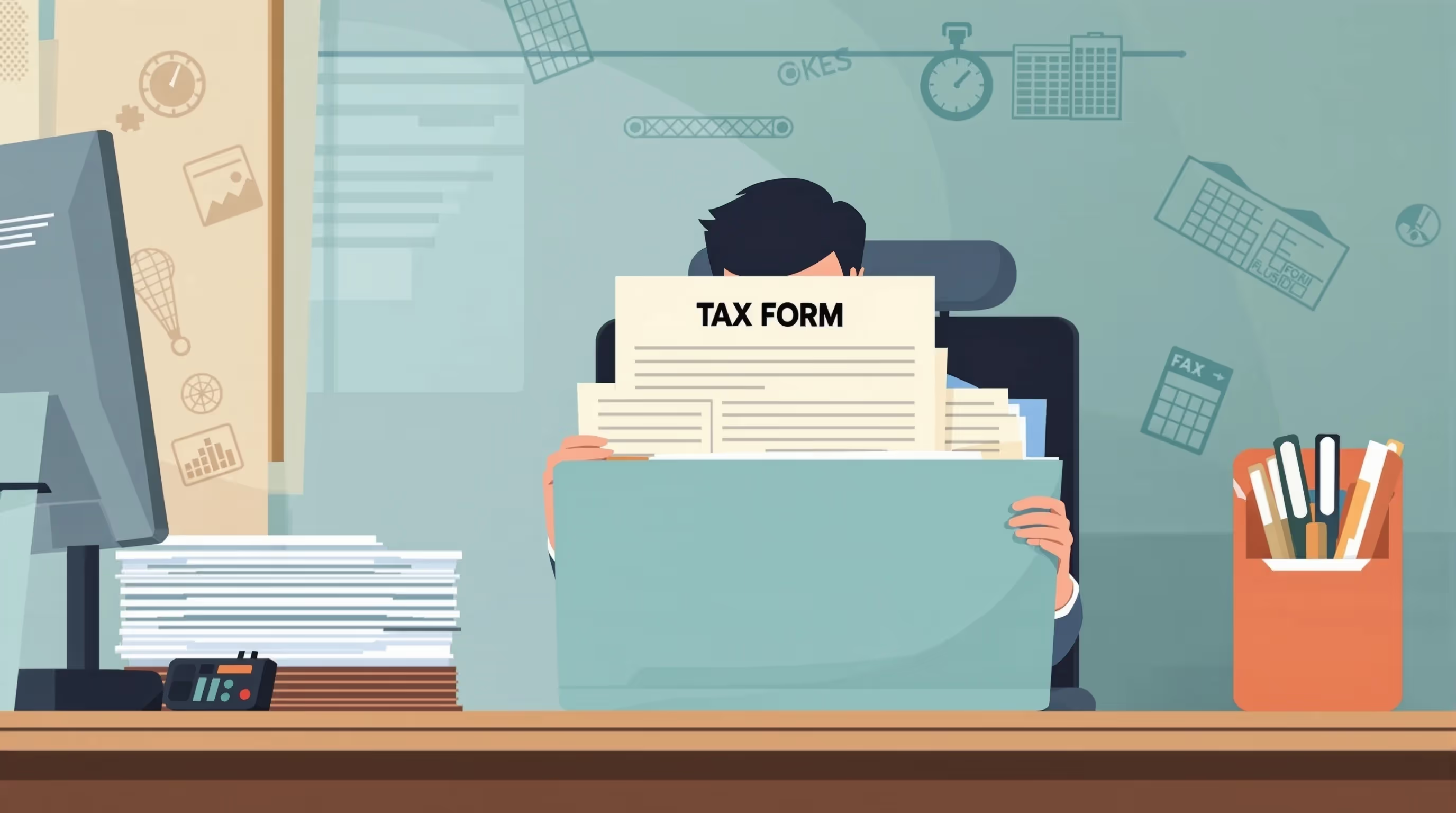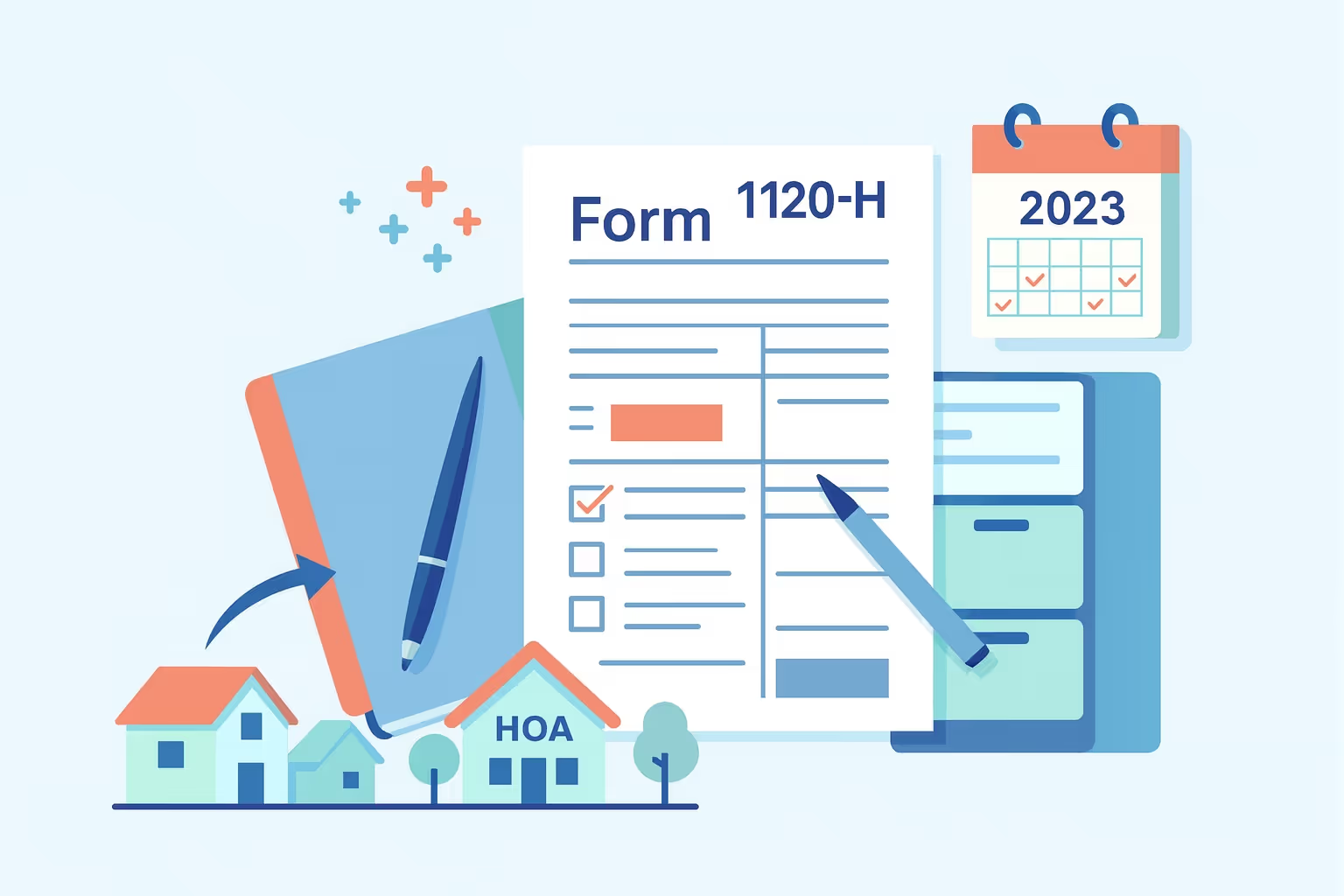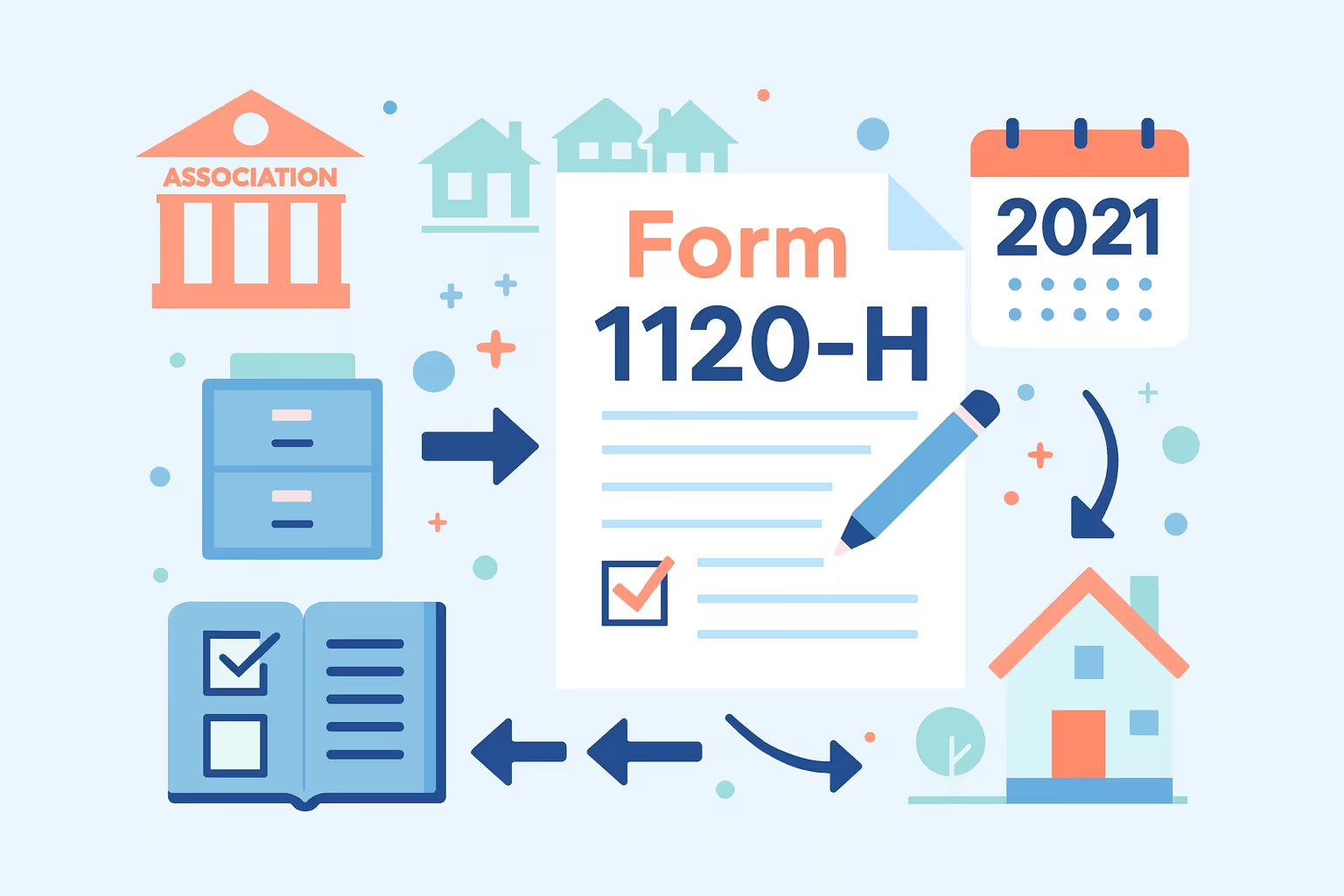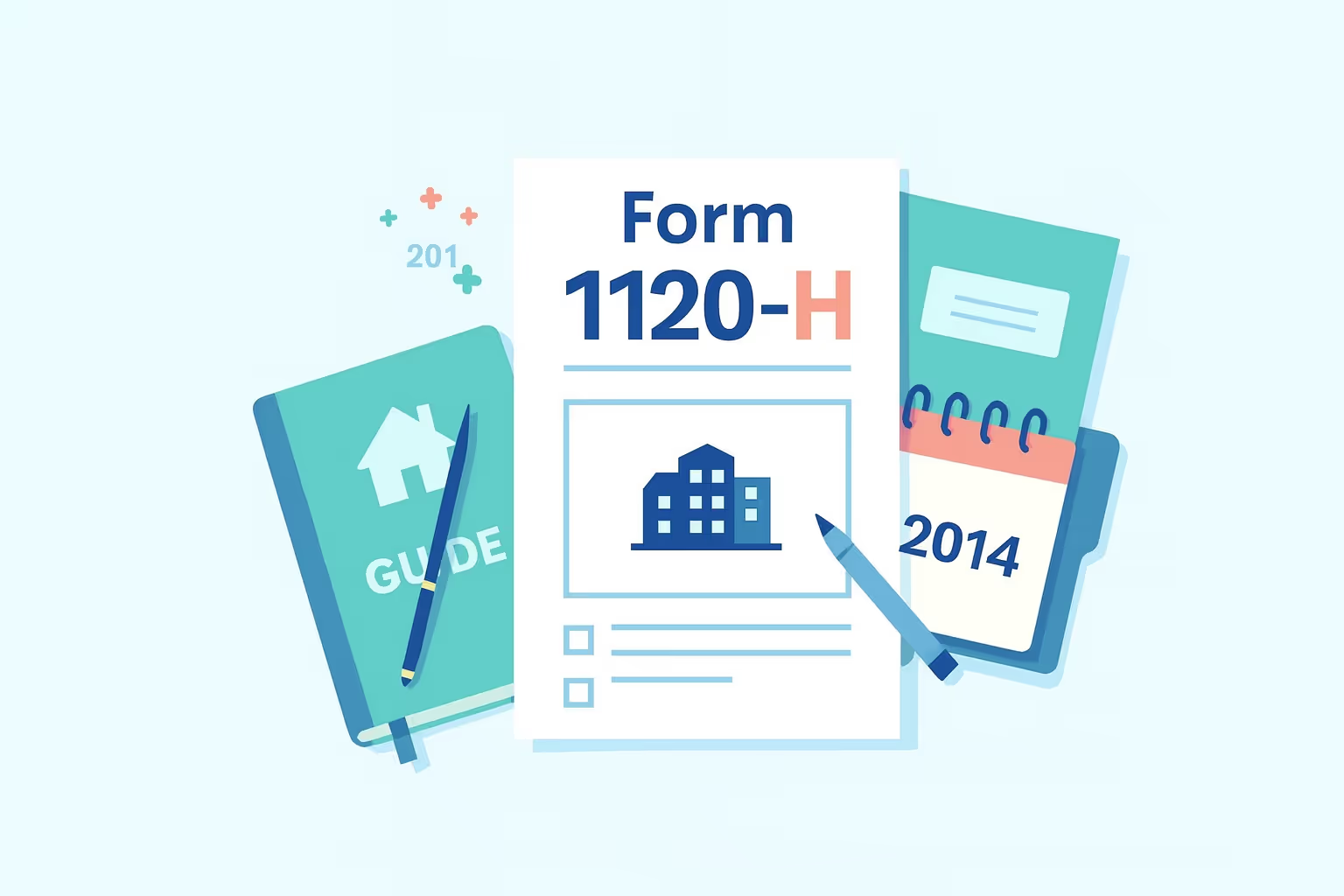Form 1120-H 2015 Instructions: HOA Filing Guide
Homeowners’ associations (HOAs), condominium management associations, and timeshare associations that are required to report income and expenses to the Internal Revenue Service (IRS) must file Form 1120-H. This specialized income tax return is explicitly designed for qualifying community associations to report annual financial activity and claim certain tax benefits under federal law. By properly filing Form 1120-H, associations can exclude exempt function income—such as membership dues, assessments, and fees—from their gross income, thereby reducing their overall tax liability.
For the 2015 tax year, the IRS maintained existing guidelines, but associations were still required to follow reporting rules, due dates, and documentation standards carefully. Associations electing to file Form 1120-H must satisfy several qualification tests, accurately report taxable and non-exempt income, and retain supporting financial statements for review. Correct filing not only prevents IRS penalties but also ensures compliance with federal tax regulations.
This guide explains the instructions for Form 1120-H 2015 in clear, practical terms. It details who must file, how to report income and deductions, and the essential steps to complete the return correctly. Whether filing for the first time or maintaining annual compliance, this article provides a structured, step-by-step resource to simplify the process for associations of all sizes.
What Is IRS Form 1120-H?
IRS Form 1120-H is a corporation income tax return explicitly created for homeowners' associations. It allows these organizations to report their annual income and expenses while taking advantage of certain tax benefits under federal tax law. By filing this form, qualifying associations can exclude exempt function income—such as membership dues, fees, or assessments—from their taxable income, resulting in a reduced tax liability.
Purpose of the Form
The primary purpose of Form 1120-H is to help associations separate their exempt function income from taxable income. This distinction ensures that only non-exempt income, such as interest income, dividends, or rental income from non-members, is subject to tax. The form streamlines the process of reporting income and expenses for HOAs, making it more comparable to a standard corporate tax return.
Who Can File Form 1120-H?
The form may be filed by three main types of homeowners' associations:
- Condominium management associations: These are organizations that manage and maintain common areas within a condominium complex.
- Residential real estate management associations: These handle community services and maintenance for single-family developments or subdivisions.
- Timeshare associations: These manage property jointly owned or used by multiple individuals under timeshare agreements.
Each association must meet specific qualification tests under IRS regulations, including the 60 percent gross income test and 90 percent expenditure test, to use this election.
Filing Form 1120-H offers administrative ease, provides access to specific tax benefits, and supports compliance with IRS guidelines for associations managing shared property or community resources.
Eligibility Requirements for Filing
Not all homeowner's associations automatically qualify to file Form 1120-H. The Internal Revenue Service requires associations to meet specific eligibility tests that determine whether they can exclude exempt function income and claim the form’s tax benefits. Meeting these requirements ensures the organization’s income tax return accurately reflects both exempt and taxable income.
The 60 Percent Gross Income Test
An association must demonstrate that at least 60 percent of its gross income for the tax year consists of exempt function income. This typically includes:
- Membership dues, assessments, or fees that are collected from property owners.
- Income used to maintain or manage the association’s common property.
- Payments are directly connected to the operation and upkeep of community facilities.
Income from non-member sources, such as facility rentals, investment earnings, or advertising, does not qualify as exempt and must be reported as taxable income.
The 90 Percent Expenditure Test
To qualify under this test, at least 90 percent of the association’s total expenditures must be used for the following purposes:
- Acquiring, building, managing, maintaining, or caring for association property to ensure the community’s facilities remain functional and well-kept.
- Paying for services that directly benefit the community, such as landscaping, security, and general maintenance.
- Covering routine operating costs related to the ongoing upkeep and management of shared property.
These expenses demonstrate that the association’s spending primarily supports community interests rather than individual profit.
The No Private Benefit Rule
No member, officer, or individual may personally profit from the association’s net earnings, except in limited circumstances:
- A member may be eligible to receive a rebate for overpaid membership dues or fees.
- Individuals may benefit indirectly through improvements to community property or shared amenities.
Associations that meet all three requirements may file Form 1120-H to obtain favorable tax treatment, allowing them to exclude exempt income while paying tax only on non-exempt income.
What’s New for the 2015 Tax Year?
For the 2015 tax year, there were no significant tax law changes affecting Form 1120-H. However, homeowners' associations should regularly review updates on the IRS website to ensure compliance with current filing requirements. The key filing procedures, income rules, and qualification tests remained consistent with prior years.
Form 1120-H for the 2015 tax year applies to the following associations:
- Calendar year filers whose tax year ended on December 31, 2015.
- Fiscal year filers whose tax year began in 2015 and ended in 2016.
The filing due dates were:
- For calendar year filers, the due date was March 15, 2016.
- For fiscal year filers, the due date was the 15th day of the third month following the close of the fiscal year.
If the due date fell on a weekend or federal holiday, associations were permitted to file on the next business day.
Automatic Election Extension
If a homeowners association failed to make the election to file Form 1120-H by the original due date, it was eligible for an automatic 12-month extension under IRS Regulation section 301.9100-2.
To remain compliant, associations should always confirm the latest filing instructions and deadlines through official IRS guidelines.
Step-by-Step Instructions for Completing Form 1120-H
Step 1: Pre-Filing Checklist.
- Confirm that the association qualifies under IRS regulations and meets both the 60 percent gross income and 90 percent expenditure tests.
- Gather all financial documents showing association income, taxable income, and exempt function income for the tax year.
- Verify the Employer Identification Number, legal name, and mailing address before completing the income tax return.
Step 2: Completing Header Information.
- Enter the association’s legal name, mailing address, and Employer Identification Number exactly as they appear on IRS records.
- Check the correct association type and indicate whether the filing is for a calendar or fiscal year.
- Mark any applicable boxes for amended, final, or address change returns so the Internal Revenue Service can process them accurately.
Step 3: Reporting Income.
- Report only non-exempt income, such as interest income, capital gains, and rents or royalties from non-members.
- Exclude exempt function income and show it in the appropriate section to avoid overstating taxable income.
- Include tax-exempt interest received and other disclosures as required under IRS regulations for complete reporting.
Step 4: Claiming Deductions.
- Deduct only expenses directly related to generating taxable income, such as interest, repairs, or depreciation.
- Exclude costs connected to exempt income or association services funded by membership dues.
- Review total deductions to ensure all amounts are accurately supported by documentation and align with the tax form instructions.
Step 5: Calculating Taxable Income and Tax Liability.
- Subtract total deductions from gross income to determine taxable income, then apply the $100 specific deduction.
- Use a 30 percent tax rate for condominium and residential associations or a 32 percent rate for timeshare associations.
- Compare the calculated total tax with the federal tax paid or estimated tax payments to determine whether taxes are owed or overpaid.
Step 6: Signing and Submitting the Form.
- Ensure an authorized officer signs and dates the tax return before filing to validate the submission.
- Include the paid preparer’s information if a professional assisted in completing the form.
- File by the due date for calendar year filers or fiscal year filers and retain a copy for recordkeeping and future IRS reference.
Common Mistakes and How to Avoid Them?
Filing Form 1120-H accurately helps homeowners' associations avoid penalties and maintain their election for tax benefits. Many errors occur due to misunderstandings of IRS regulations or incorrect calculations. The following are common mistakes and practical ways to prevent them.
Eligibility Errors
- Failing to meet the 60 or 90 percent tests: Associations often misclassify income or expenses, leading to disqualification. Always confirm that exempt function income and qualifying expenditures meet IRS thresholds before filing.
- Using the wrong association type: Some organizations mistakenly identify themselves as condominium associations when they are actually operating as residential real estate associations. Review your governing documents to select the correct category.
Reporting Errors
- Including exempt income as taxable: Membership dues and assessments should not be reported as taxable income. Only non-member income, such as investment or rental income, should appear on taxable lines.
- Omitting investment or rental income: All interest, dividends, and other non-exempt income must be reported accurately to avoid underreporting.
Deduction Errors
- Claiming unqualified deductions: Only expenses directly related to taxable income may be deducted. Costs associated with exempt activities cannot be claimed as a deduction.
- Forgetting the $100 specific deduction: Every qualifying association is entitled to this deduction; failing to claim it results in an overpayment.
Administrative Mistakes
- Missing signatures or EINs: Returns without an Employer Identification Number or authorized signature are invalid. Always verify this information before submission.
- Late filing without an extension: Failing to meet the due date results in penalties and interest. File Form 7004 for an extension if more time is needed.
Reviewing each section carefully before submission helps associations stay compliant with IRS regulations and avoid costly corrections later.
Zero Activity or Dormant Year Filings
Some homeowner associations may experience a tax year with no significant financial activity, but should still file Form 1120-H to maintain their election and comply with IRS guidelines. Filing even during dormant periods demonstrates responsible management and preserves eligibility for future tax benefits.
When to File with Zero Activity?
- Associations should file if they collected any exempt function income, such as membership dues or assessments, to maintain their tax election status.
- Filing is also necessary when the association wants to establish or preserve its IRS filing history for future tax years.
- Associations should submit a return, even if they have no taxable income, to document ongoing compliance with IRS regulations.
How to Complete a Dormant Year Return?
- Report only exempt function income, such as dues or fees, and enter zero for taxable income lines if no non-exempt income was earned.
- Apply the $100 specific deduction and indicate that no tax is owed for the association’s tax year.
- Complete the return as usual and have an authorized officer sign to confirm the filing’s validity.
- Retain copies of the form and any supporting documentation for recordkeeping and future reference.
Benefits of Filing in Dormant Years
- Filing ensures the association remains in good standing with the Internal Revenue Service and avoids losing its Form 1120-H election.
- Maintaining consistent filings helps demonstrate compliance with tax law and supports eligibility for certain tax benefits.
- Establishing an ongoing record can protect the association in the event of future audits or IRS inquiries.
- Filing confirms transparency in the association’s financial operations, even when no tax was due.
First-Time Filer Tips for HOAs
Filing Form 1120-H for the first time can be challenging for new associations unfamiliar with federal tax requirements. Following these steps helps ensure a smooth process and accurate reporting.
Preparation Steps
- Obtain an Employer Identification Number (EIN): Apply online through the IRS website before completing the return.
- Organize financial records: Keep clear documentation of all income, expenses, and assessments for the tax year.
- Review governing documents: Confirm the association’s purpose and classification align with IRS definitions.
Understanding the Annual Election
Form 1120-H is an annual election that must be made each year by the due date of the association’s income tax return. Associations can choose not to make the election in any given year but must then file the appropriate corporate return instead.
Recordkeeping Practices
Maintain accurate records for a minimum of three years, including financial statements, invoices, and bank reconciliations, to ensure compliance with relevant regulations and financial reporting requirements. Proper documentation supports the association’s compliance during audits or reviews.
Seeking Professional Assistance
If the association is uncertain about how to classify income or apply tax rules, it is advisable to consult a tax professional who specializes in homeowners' associations. Professional guidance helps prevent costly errors and ensures that all IRS requirements are met.
A careful first filing establishes a reliable foundation for future compliance and strengthens the association’s record with the IRS.
Frequently Asked Questions
What is the purpose of Form 1120-H?
Form 1120-H is a corporation income tax return used by homeowners' associations, condominium management associations, and timeshare associations to report income and claim certain tax benefits. It allows associations to exclude from their gross income exempt function income, such as membership dues and fees. This helps reduce taxable income, ensures compliance with IRS regulations, and simplifies the filing process compared to a standard corporate tax form.
What qualifies as exempt function income?
Exempt function income consists of payments received from members for association services such as maintenance, landscaping, and repairs of association property. It represents exempt income because it supports the operation and upkeep of shared facilities rather than generating profit. However, non-exempt income—like interest income, capital gains, or rental income from non-members—must be reported on the income tax return as taxable income.
What tax rate applies to Form 1120-H?
The applicable tax rate depends on the type of homeowners' association. Condominium and residential real estate associations pay tax at 30 percent of their taxable income, while timeshare associations pay 32 percent. These rates apply after all total deductions have been subtracted. Using the correct tax rate ensures accurate total tax reporting and prevents penalties imposed by the Internal Revenue Service for underpayment or filing errors.
When is the filing deadline for the 2015 Form 1120-H?
For the 2015 tax year, calendar year filers had to submit Form 1120-H by March 15, 2016, while fiscal year filers were required to file by the 15th day of the third month following the end of their association’s tax year. If additional time was needed, associations could file Form 7004 for an automatic extension, but any federal tax owed still had to be paid by the original due date.
What should homeowners' associations include when filing Form 1120-H?
When homeowners' associations file Form 1120-H, they must include accurate financial data, such as total income, total deductions, and taxable income. Supporting documents, such as Schedule D for capital gains, Form 4797 for property sales, or Form 4562 for depreciation, may also be required. Associations should verify their Employer Identification Number (EIN), mailing address, and compliance with IRS guidelines before submitting their tax return.
What happens if the homeowners' association fails to file Form 1120-H?
If a homeowners association fails to file Form 1120-H, it may lose the ability to exclude exempt function income and be required to file Form 1120 instead. This can increase its tax liability and result in penalties or interest for unpaid tax. Filing late or inaccurately also risks IRS scrutiny and could lead to substantial understatement penalties or delays in future election eligibility.
Can an association claim any tax credits on Form 1120-H?
While most homeowners' associations do not qualify for major credits, such as the Low-Income Housing Credit or New Markets Credit, they may be eligible for specific federal tax-paid credits, like the Qualified Electric Vehicle Credit. Associations should review related forms and IRS regulations or consult a tax professional to confirm eligibility. Staying up to date on tax law changes ensures all credits and deductions are applied correctly.






